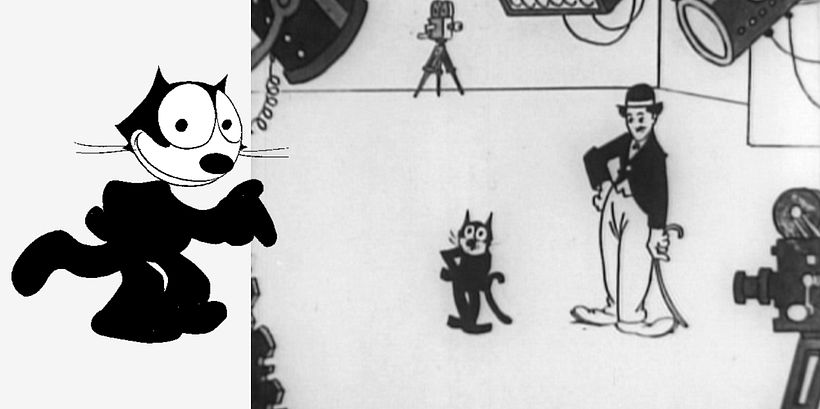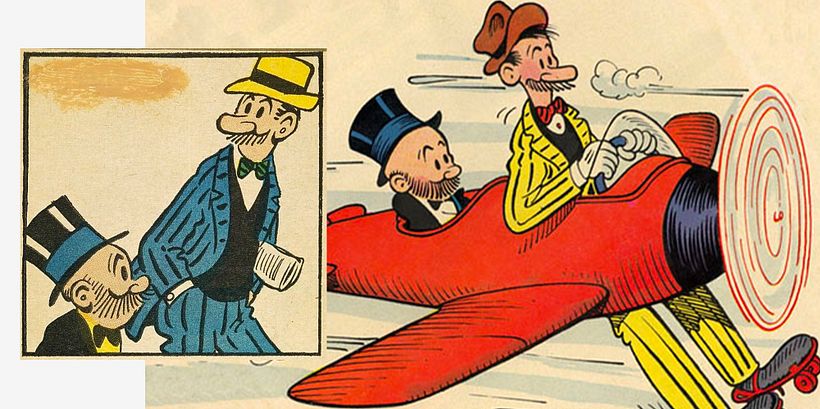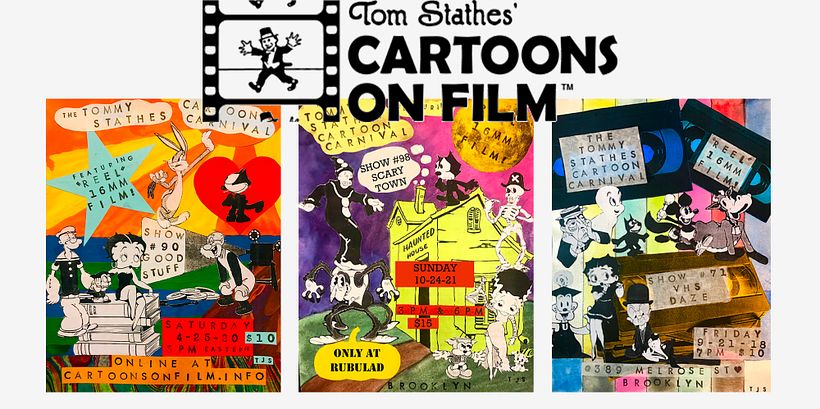Diving into Tommy José Stathes' Archive of Forgotten Animations

Is early animation your passion? I bet not as much as the animation historian, archivist, and educator Tommy José Stathes who has gathered 200+ early animations you wouldn't have heard of otherwise.
Now you can watch them in HD and without dedicating your whole life to it, isn't that nice? You can watch these animations (one or two probably if you are not a dork) and then go on with your day... For Tommy José Stathes, this doesn't apply...!
Let's go over some of the classics you would've missed if it weren't for this archive of early animated cartoons

Felix the Cat
The famous cartoon character (not to be confused with Fritz the Cat unless you want to be confused, of course!) was created in 1919 by Pat Sullivan and Otto Messmer during the silent film era.
This anthropomorphic black cat, is often considered one of the most recognized cartoon characters in film history. But it didn't last. It died with his authors, unlike Mikey Mouse who might live for many more centuries, even if as the 3D abomination it has become. But don't forget that Felix was the first fully realized animal character in the history of American film animation. It will be in the final exam... so you better read this article thoroughly!
After years of refusing to convert Felix to sound, Sullivan finally agreed to use sound in Felix's cartoons. After some technical issues that stagnated the project, Pat Sullivan announced that Felix would return in sound in 1933, but died that year before production began. Well, yes... Mickey won as we all know by now!
Koko The Clown
The animated cartoon character created by Max Fleischer, first appeared as the main protagonist in Out of the Inkwell (1918–1929), a major animated series of the silent era. Koko was often depicted as having free will of his own, and rebelled against his creator, who also appeared in some of the movies.
The character originated when Max Fleischer invented the rotoscope, a device that allowed for animation to be more lifelike by tracing motion picture footage of human movement. A technique later used by Disney in movies such as Snow White and the Seven Dwarfs, The Little Mermaid and Beauty and the Beast. And even other more mature works such as Heavy Metal or the recent Loving Vincent.
Digital Rotoscoping is usually disturbing to look at though, due to the uncanny valley effect it gives off. The Polar Express is a film with realistic-looking characters, largely because of the filmmakers’ rotoscoping and CGI technology. If you saw it, you know what the uncanny valley feels like.
The Runaway (1924) with Max Fleischer himself, acting and it, might be one of my favorite cartoon shorts I've seen! And I got to saw it thanks to Tommy José Stathes and his nerdy antics.

Mutt and Jeff
These characters first appeared in the newspaper comic strip created by cartoonist Bud Fisher with the same name. You know, the type of cartoons where the characters are constantly being kicked out of establishments through windows and doors?
In 1916, Fisher licensed the production of Mutt and Jeff for animation with pioneers Charles Bowers and Raoul Barré of the Barré Studio. Raoul Barré is also famous for inventing another more rudimentary animation technique called the Peg system, which allowed animators to keep their pages from moving while they animate. The series lasted 11 years and more than 300 animated Mutt and Jeff shorts were released by the Fox Film Corporation, making it the longest continuing theatrical animated movie serial and second longest to Krazy Kat.

After watching some of those early animations you might be wondering how long it took to animate them, because they are certainly easy to watch...! If you are thinking of becoming an animator, maybe think twice: Do you want to spend most of your time sitting down with bad posture and back problems whilst you draw close to the same frame an infuriating amount of times...?
Sure, now there are new technologies and techniques to make the process smoother... Just try to avoid the uncanny valley... or go for it and create another abomination using AI or some CGI rotoscope...! It is in your hands, ultimately...
And as you already know, Domestika can also teach you animation! When is Domestika going to offer a course on a DIY cure for cancer? I don't know, but it might be soon...
Be creative with it, though! Maybe knit a nice crochet jacket for the syringe...? I don't know... I only know that you should:
- Join our courses on animation
- Stop motion animation materials
- What's stop motion animation?






0 comments